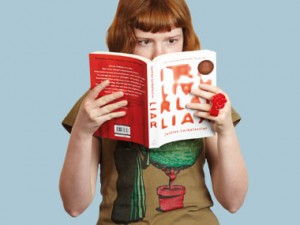Guide to Reviewing Youth Literature

For most people, the term youth literature probably brings to mind the Hunger Games or the Twilight Saga or even Harry Potter, which are among the more popular youth literature of modern times.
However, there has been a recent upturn in interest in youth literature classics such as Heidi, Oliver Twist and Little House on the Prairie, which have also entertained and educated young readers for years.
Despite the gulf in style and content of new youth literature and older works, one of the unique features of this genre is that readers usually find a character with whom they can connect with. Whose story and struggle draws parallels which enable the young minds to understand things and come to terms with them amidst the often turbulent world of adolescence.
In this context, youth literature is quite influential and equally important, which merits review and analysis as to its effectiveness. Here are some tips to aid you in reviewing youth literature.
Instructions
-
1
Ease of reading and understanding
Although an increasing number of adults read youth literature, the main aim remains connecting with young adults, therefore the language and writing style of the author must make the material easy to understand and relate to for the targeted age group.
This isn’t just limited to the writing but also the thematic elements and characters in the work, because young readers need relatable characters and stories. -
2
Protagonist and his characteristics
Whilst it is possible to address many of the issues facing young adults in today’s world, literature meant for youths must be directed towards them in a way they can easily understand. This is best done by creating a protagonist and a main character that they can identify with.
Typically, you can’t label a work as youth literature if the main character in it is not a youngster. -
3
Comparison between contemporary and classics
There are several great works of youth literature that have become classics. These works serve as good references to assess and analyze new literature and compare aspects such as setting, time, characters, themes and other considerations.
Typically however, contemporary literature is tuned to appeal to modern sensibilities and preferences, which isn’t necessarily a negative element. -
4
Movie adaptions
Unfortunately with the advancements in technology, young adults today do not read as much as the previous generations used to. However, this does not mean teenagers do not enjoy a good story, it just means that they’d much rather on watch it on TV, in movies or on other multimedia devices.
You can watch the movie version of a work to assess it as well. Most of the modern literary works have already been translated into motion pictures. And while they are typically shorter versions of the stories, they appeal and reach out to a wider audience. -
5
Teachings and lessons
Good youth literature should not just evoke emotions or excite youngsters. It should also induce some reflection, discussion and some debate without attempting to influence which side of the argument the readers stands on.
Possibly, getting a group of young adults to discuss youth literature might help to enforce the educational theme, teachings and lessons presented in the literature.







